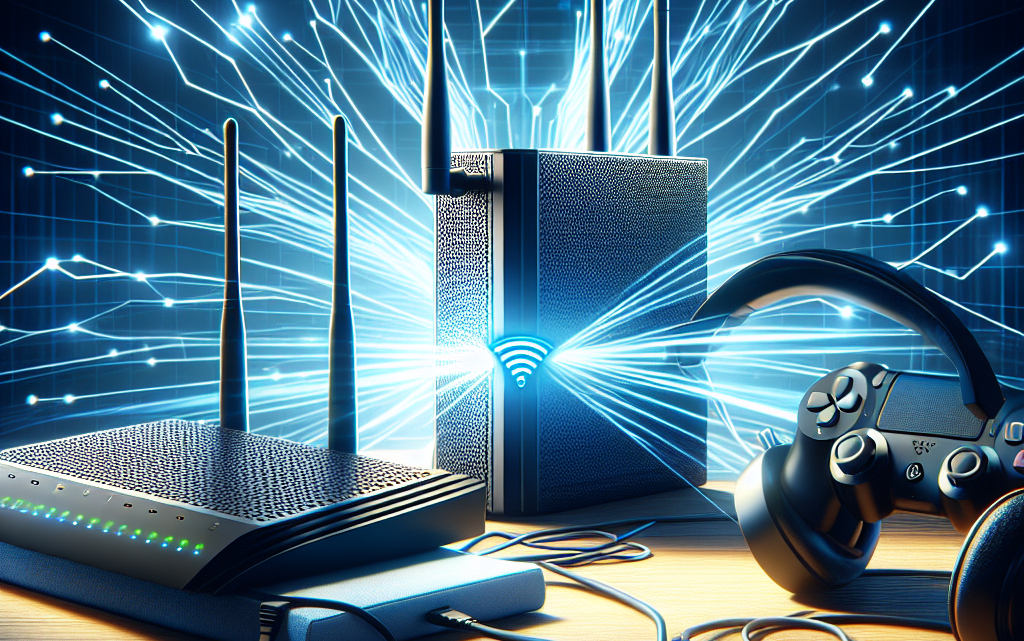Introduction
Online gaming demands a stable and fast internet connection, which can be significantly affected by your router settings. Optimizing your router’s settings is crucial to reduce latency, minimize lag, and ensure a seamless gaming experience. In this article, we will guide you through the process of optimizing your router for gaming.
Understanding Key Router Settings
Before diving into specific optimization techniques, it’s essential to understand some key router settings:
- Quality of Service (QoS): Prioritizes gaming traffic over other types of network traffic.
- Port Forwarding: Allows specific ports to be open for direct communication between your gaming device and the game server.
- Firmware Updates: Ensures your router is using the latest software to fix bugs and improve performance.
- Bandwidth Allocation: Distributes available bandwidth among devices on your network.
Steps to Optimize Your Router for Gaming
1. Update Router Firmware
Regular firmware updates are essential to maintain your router’s performance. Manufacturers often release updates to fix bugs, enhance security, and improve functionality.
To update your router’s firmware, follow these general steps:
- Login to your router’s admin interface using a web browser.
- Find the firmware or update section. This is usually under Administration or Advanced Settings.
- Check for the latest firmware version and follow the instructions to update.
2. Enable Quality of Service (QoS)
QoS settings allow you to prioritize gaming traffic, ensuring that your gaming device gets the most bandwidth and the lowest latency.
To enable QoS:
- Access the router’s admin interface.
- Navigate to the QoS section.
- Enable QoS and set your gaming device to the highest priority.
3. Use a Wired Connection
Wireless connections can be unstable and prone to interference. Using an Ethernet cable to connect your gaming device directly to the router ensures a stable and fast connection.
4. Port Forwarding
Many online games require specific ports to be open for a better connection. Port forwarding allows these ports to be accessible by your gaming device.
To set up port forwarding:
- Find out which ports your game uses. This information is usually available on the game developer’s website.
- Access the router’s admin interface.
- Navigate to the Port Forwarding section.
- Add a new rule with the required port numbers and your gaming device’s IP address.
5. Optimize Wi-Fi Settings
If a wired connection is not an option, optimize your Wi-Fi settings to get the best performance:
- Use the 5 GHz band instead of the 2.4 GHz band for less interference.
- Place your router in a central location, away from walls and other obstructions.
- Ensure your router’s Wi-Fi channels do not overlap with those of nearby networks. Use a Wi-Fi analyzer app to find the best channel.
6. Bandwidth Allocation
Allocate bandwidth to ensure your gaming device has enough resources without being affected by other network activities.
To allocate bandwidth:
- Access the router’s admin interface.
- Go to the bandwidth allocation or traffic manager section.
- Set a higher bandwidth allocation for your gaming device.
Common Router Models and Their Specific Settings
Here are some common router models and the specific settings you might need to optimize for gaming:
| Router Model | Firmware Update | QoS Settings | Port Forwarding | Bandwidth Allocation |
|---|---|---|---|---|
| Netgear Nighthawk | Yes | Yes | Yes | Yes |
| Asus RT-AC88U | Yes | Yes | Yes | Yes |
| Linksys WRT3200ACM | Yes | Yes | Yes | Yes |
| TP-Link Archer C7 | Yes | Yes | Yes | Yes |
Using Gaming Routers
Gaming routers are designed specifically to handle high-bandwidth activities such as online gaming. They come with advanced features like game-specific QoS, faster processors, and optimized antennas.
If you are a serious gamer, investing in a gaming router can significantly enhance your online gaming experience.
Top Gaming Routers
Here is a list of some top gaming routers available in the market:
- Netgear Nighthawk Pro Gaming XR500
- Asus ROG Rapture GT-AX11000
- Linksys WRT32X Gaming Router
- TP-Link Archer C5400X
Conclusion
Optimizing your router’s settings for gaming is a multi-step process that involves updating firmware, enabling QoS, using wired connections, port forwarding, and allocating bandwidth effectively. By following these steps, you can significantly reduce lag and improve your overall gaming experience. For serious gamers, investing in a quality gaming router can provide additional benefits and ensure a stable and high-speed connection.

